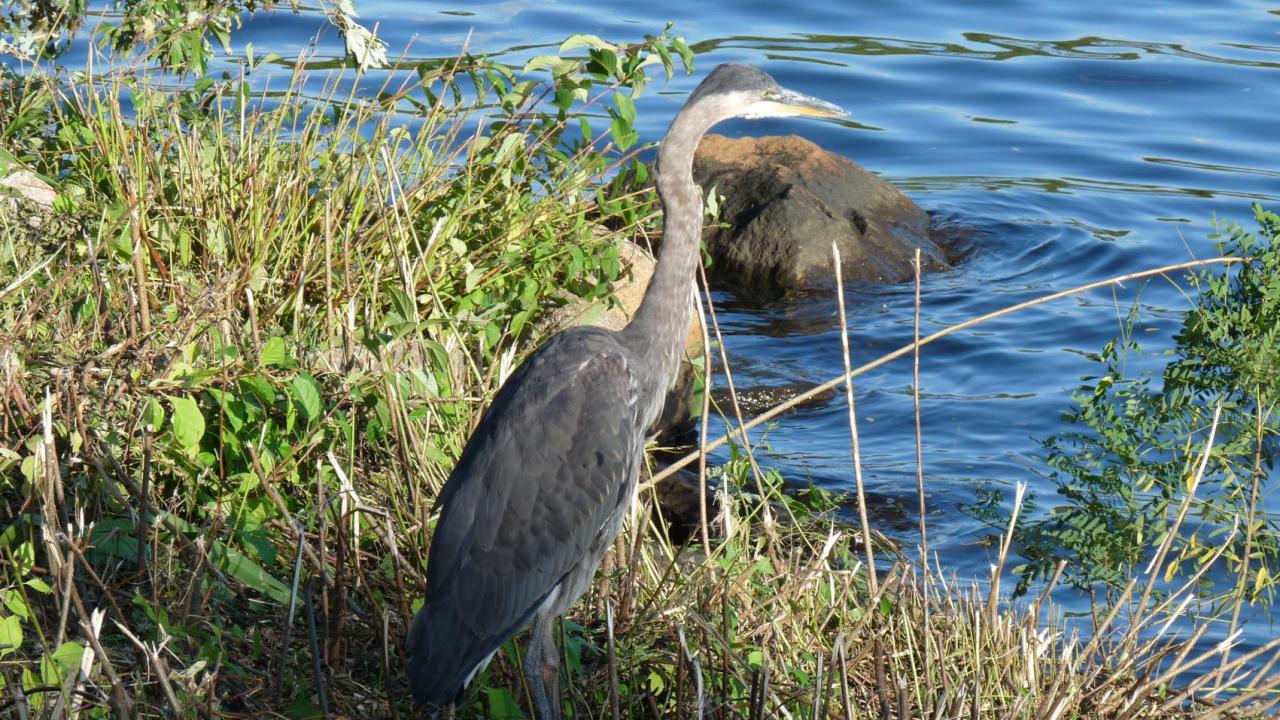Description:
The Great Blue Heron (Ardea herodias) is the largest heron in the Americas and, among all herons, it is surpassed only by the Goliath Heron (Ardea goliath; only in parts of Africa and Asia) and the White-bellied Heron (Ardea insignis; in India, Bhutan and Myanmar).
It has a height of 115–138 cm and a wingspan of 167–201 cm.
The Great Blue Heron is replaced in the Old World by the very similar Grey Heron (Ardea cinerea), which differs in being somewhat smaller (90–98 cm), with a pale grey neck and legs, lacking the browner colors that the Great Blue Heron has there.
A pure white subspecies (or just a white morph as argued by some authors) of the Great Blue Heron, formerly known as the "Great White Heron," is found nearly exclusively in shallow marine waters along the coast of very southern Florida, the Yucatan Peninsula, and in the Caribbean.
The white morph of the Great Blue Heron distinguishes itselves from the Great Egret (Ardea alba) by its larger size, dusky pale to grayish yellow legs (instead of black) and its longer neck.
There are five subspecies:
1. A. h. herodias: most of North America, except as below;
2. A. h. fannini: the Pacific Northwest from southern Alaska south to Washington (coastal);
3. A. h. wardi: Kansas and Oklahoma to Florida, sightings in southeastern Georgia;
4. A. h. occidentalis: southern Florida, Caribbean islands, formerly known as a separate species, the Great White Heron;
5. A. h. cognata: Galápagos Islands.
1st photo: A. h. herodias. Boston, Massachusetts, USA, 15 September 2009
2nd photo: A. h. herodias. Sandy Point State Reservation, Plum Island, Ipswich, Massachusetts, USA, 20 September 2009


